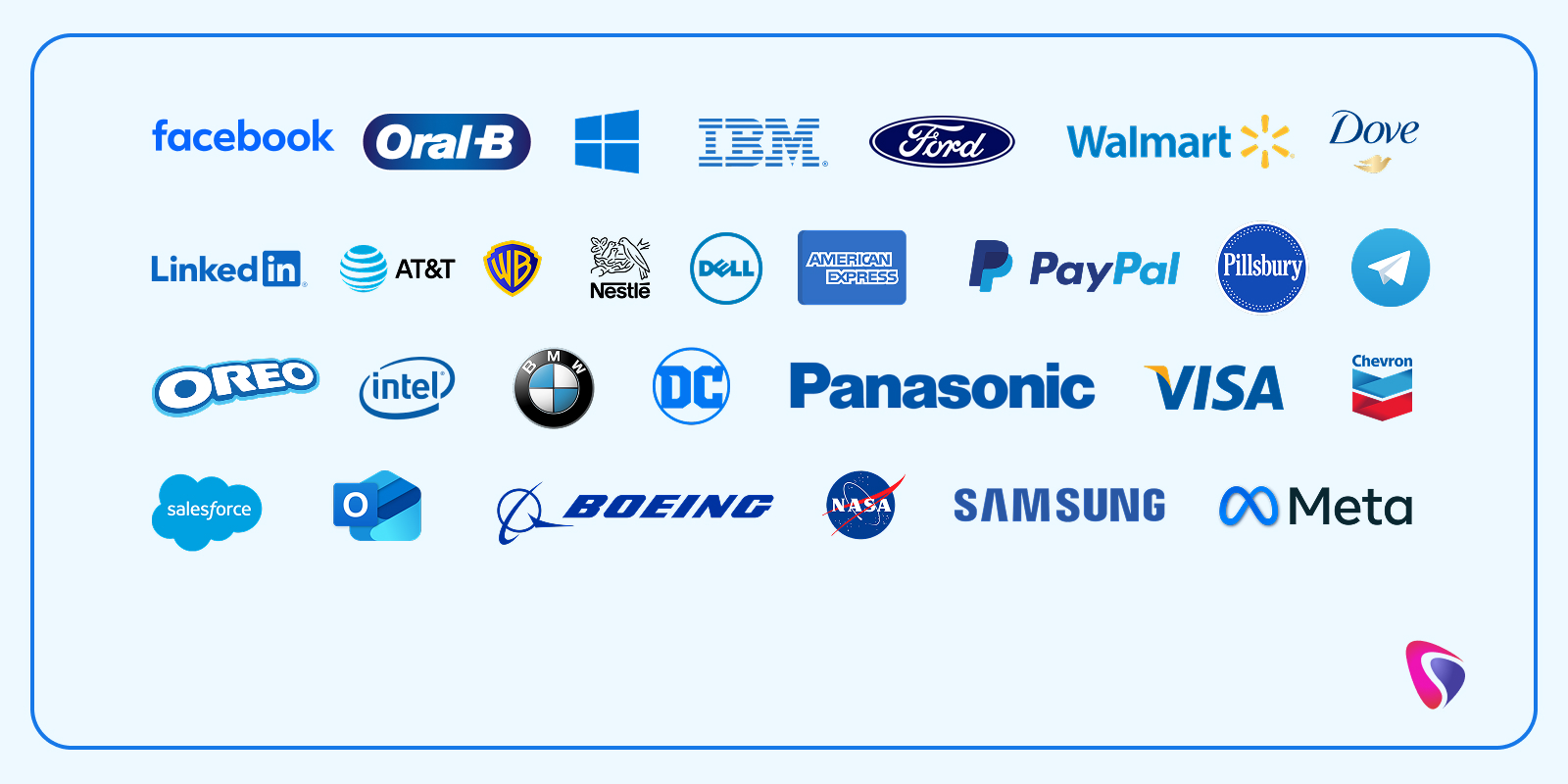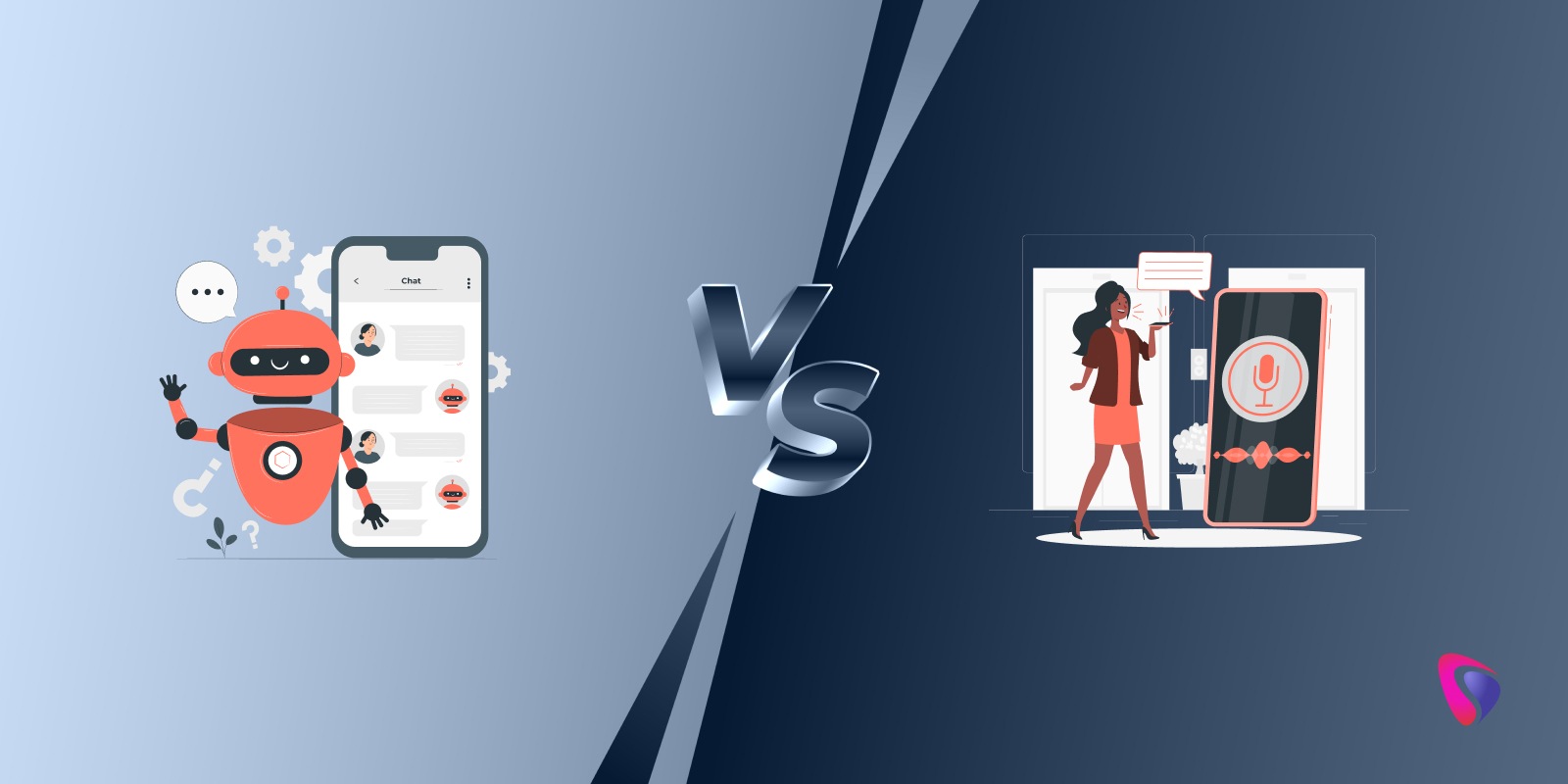
Let’s face it, the healthcare industry has historically been slow to evolve and adopt emerging technologies. A strict regulatory environment, the prevalence of legacy systems, high transition costs, resistance to change, and a lack of IT talent are some of the reasons why the healthcare sector is hesitant to evolve at the same pace as the finance and retail sectors.
Having said that, the healthcare market has undergone drastic changes following the COVID-19 pandemic. The global revenue of the healthcare IT market is estimated to be $588.39 billion in 2025, and this figure is projected to reach $1,773.33 billion by 2024. Technologies transforming the healthcare landscape include AI/ML applications, wearables and IoT, and, most importantly, Cloud Computing and DevOps.
A study states that 73% of healthcare institutions had already adopted DevOps by 2021. These institutions have successfully leveraged the power of DevOps to optimize patient care and improve operational efficiency. Using slow, legacy systems and working in silos can cause delays and increase costs. DevOps can eliminate these problems and cause a 360-degree transformation for healthcare institutions.
How does one implement DevOps? How do we address these challenges? What are the costs? We know you have plenty of questions. This blog will answer your questions and dive deep into the world of DevOps in healthcare. Let’s get started.
What is DevOps and What Does it Do?
As the name indicates, DevOps blends development and operations, but it encompasses much more. It’s a robust strategy, a well-established methodology that promotes seamless teamwork between software development and operations teams, enabling them to create cutting-edge products swiftly, securely, and efficiently. Throughout the product's life, these teams align their efforts towards a shared objective, maintaining transparency from beginning to end.
The core pillars of DevOps are as follows-
- Efficient team collaboration
- More efficiency to minimize manual work and boost automation
- Constant improvement through learning from feedback
- Delivering updates quickly and safely
DevOps Tools and Techniques
- CI/CD - Builds, tests, and delivers software automatically.
- Infrastructure as Code - Manages servers and systems with scripts instead of manual setups.
- Automated Testing - To identify bugs early on.
- Real-Time Monitoring - To monitor the software’s performance
- Quick Feedback Loops - Facilitates fast improvements.
In this way, DevOps helps companies ensure faster time to market without compromising on innovation and functionality.
Importance of DevOps in the Healthcare Sector
The healthcare sector relies heavily on a variety of software systems, including EHR, EMR, CDSS, PACS, telemedicine platforms, and medical billing software, to name a few. These systems must work together smoothly, often around the clock, to ensure they deliver top-notch performance while staying reliable and secure.
It's exciting to note that the healthcare cloud computing market is expected to soar to $199.21 billion by 2032, showcasing the incredible growth opportunities ahead.
Hospitals, digital health startups, and pharmaceutical companies use DevOps for the following-
1. Faster Time-To-Care
- DevOps expedites the deployment of healthcare applications.
- Fosters the faster and effective launch of tools like patient management systems and AI diagnostic platforms.
- Automates software updates and new feature releases.
- Eliminates long delays that are commonly seen in traditional IT processes.
2. Enhanced Patient Experiences
- Supports the fast development of telehealth and remote care services.
- Enhances features like real-time health monitoring and online appointment booking.
- Allows companies to scale quickly to handle a high number of users and services.
- Results in better access, convenience, and satisfaction for patients.
3. Ensures Compliance and Security
- Builds security into the development process (DevSecOps).
- Ensures compliance with data protection laws such as HIPAA and GDPR.
- Automates security checks and compliance audits.
- Reduces the risk of data breaches and human errors.
4. Support Innovation in AI & Data Analytics
- Provides a stable environment for AI-powered healthcare tools.
- Supports use cases like predictive analytics for patient outcomes, personalized medicine, and automated diagnostics.
- Ensures smooth integration of data science and software development teams.
- Makes platforms scalable and reliable for new and innovative products.
5. Reduced Operational Overheads
- Automates infrastructure tasks using IaC, aka Infrastructure as Code.
- Replaces manual configurations and constant firefighting of IT problems.
- Enables the team to ditch the reactive approach and switch to proactive system monitoring and automatic scaling.
- IT teams can devote time to innovative tasks rather than solely focusing on routine maintenance.
11 Steps to implement DevOps in healthcare
A lot of companies assume that implementing DevOps in the healthcare sector is just like applying a typical IT strategy. This can be a dangerous assumption, as it can create obstacles in managing real-time patient data, essential applications, and fulfilling audit requirements. Ignoring legacy systems, insufficient training, and not keeping track of patient outcomes can really defeat the purpose of bringing DevOps into the mix.
To help, here are 11 steps that provide a tailored approach for healthcare organizations, focusing on precision, scalability, reliability, and compliance while implementing DevOps.
1. Health-Care Focused DevOps Strategy
Like we mentioned before, a generic IT strategy simply won’t work for healthcare organizations. The first thing we need to do is develop a customized DevOps roadmap that aligns with the organization’s healthcare goals. We must ensure that quicker product updates, new features, bug fixes, or configuration changes don’t sacrifice safety or compliance. We should concentrate on these essential areas.
- Zero downtime during peak clinical hours.
- Uninterrupted access to Electronic Medical Records (EMRs)
- Seamless support for audits and compliance (HIPAA, HL7, and GDPR).
The real magic unfolds when you involve stakeholders right from the start, whether it’s the clinical staff, IT folks, cybersecurity experts, or compliance teams. By doing this, companies can ensure that every initiative aligns perfectly with both care delivery and legal requirements. It’s all about focusing on outcome-driven planning rather than just chasing after features.
2. Version Control With Total Compliance Traceability
Using a version control system like Git is crucial, especially when you're working in a healthcare organization. It's important to think beyond just coding and develop a version control system that truly meets your needs. Remember, traceability is the foundation of both security and compliance. Check out the steps below to build a robust version control system while keeping compliance traceability in mind.
- Track scripts, configs, and infrastructure changes.
- Link every change to a JIRA ticket, audit item, or regulation.
- Enable forensic-level transceivability in the event of a breach or failure.
3. Containerize Apps and Automate Infrastructure
Use Docker, Kubernetes, and Terraform to isolate and manage complex systems such as the following.
- EHR Modules
- Billing Systems
- Patient Engagement Apps
Benefits of this Approach
- Updates to one module will not affect others.
- Easy scaling during disease season, pandemic-like situations, or emergencies.
- Secure infrastructure through Infrastructure-as-code (IaC).
4. Continuous Integration for Risk-Free Changes
CI pipelines should include the following.
- Unit integration and regression tests.
- Data validation tests for clinical accuracy.
- Automated tests to detect workflow disruptions. Examples include patient scheduling or lab results.
- Thanks to CI in healthcare, minor bugs are nipped in the bud and stopped from becoming system-wide risks.
5. Automate Builds for Consistency & Speed
Automated build systems such as Jenkins and GitHub Actions. What do they do?
- Reduce human errors.
- Ensure repeatable and auditable build processes.
- Prepare production-ready builds with version locking and validation checks.
These are important when companies update critical systems such as
- Medication tracking systems
- Insurance and claims processing
In short, build automation enhances speed without compromising safety.
6. Constant Testing With Clinical Use Cases
Test automation should mimic real-life clinical operations.
- Booking appointments
- Accessing and modifying EMRs
- Prescription workflows
- Submitting insurance claims
It also includes the following-
- Data protection and privacy validation.
- Negative testing for failure scenarios.
7. Controlled Continuous Deployment (CD)
Continuous deployment helps companies release features faster, but this requires tight control, especially in the healthcare sector.
- Use feature toggles, blue-green deployments, and canary rollouts.
- Set up automated rollback triggers for performance drops or bugs.
- Log every deployment for efficient audit compliance.
Most importantly, deployment agility must never come at the cost of patient safety.
8. Establish Monitoring and Feedback Loops
Integrate real-time monitoring tools such as Prometheus, Datadog, or New Relic.
- Track critical KPIs - Server uptime, database latency, API failures.
- Monitor patient-impacting delays such as EMR load time during shift change.
Combine technical telemetry with
- Clinician Feedback
- Helpdesk Support Metrics
- Patient-Report Issues
Remember that continuous feedback leads to constant improvement.
9. Implement DevOps from the Start
Security must be an integral each stage of software development.
- Embed security scanning into your CI/CD using cloud-native security platforms such as Synk and Aqua.
- Run static code analysis, container vulnerability scans, and access audits.
- Ensure data encryption and tokenization protocols are validated per release.
- Most companies think compliance and security are the same. They are not. Understand the difference and incorporate them in DevOps implementation by default.
10. Incident Response and Chaos Engineering
Downtime in healthcare can endanger the lives of countless patients. How to implement incident response and chaos engineering?
- Define SLAs and SOPs for system failures.
- Use a chaos engineering platform such as Gremline to simulate outages and test response.
- Build resilient fallback mechanisms such as cached patient data and offline modes.
- Bottom line - Don’t wait til failure. Prepare for it before it happens.
11. DevOps Culture of Shared Responsibility
Tools cannot overcome siloed workflows and thinking. Instead, it would make sense to develop a DevOps culture of shared responsibility. This includes the following.
- Create Cross-Functional Teams - Unite professionals from various fields, such as developers, operations, QA, and compliance staff.
- This collaborative approach ensures that everyone’s insights are woven into the process right from the beginning. The outcome? Quicker problem-solving, fewer mistakes, and a stronger alignment with healthcare regulations.
- Encourage a culture of blameless postmortems and knowledge-sharing. What does that mean? Instead of pointing fingers when things go wrong, focus on understanding why it happened.
- How can we avoid similar issues in the future? Celebrate success as a team effort. Remember, it’s not just about the developers’ contributions; it’s about the whole team’s achievements.
These steps can help you implement DevOps in your organization. However, the strategies may have to be tweaked as per business type and goals. Consult an experienced DevOps healthcare engineer to know more.
Pros and Cons of DevOps in Healthcare.
Before implementing DevOps in an organization, companies must understand its pros and cons.
|
Aspect |
Pros |
Cons |
|
Patient Engagement |
Real-time access to medical records, faster updates, and virtual consultations to boost engagement |
Increased dependence on digital platforms may alienate digital novices or elderly patients. |
|
Speed and Agility |
Faster development and deployment through CI/CD pipelines |
Speed-focused approach might lead to oversight if not well-balanced with compliance checks |
|
Data Management |
Automation and IaC reduce human errors and enhance reporting accuracy |
Improperly configured automation can propagate errors across systems at scale |
|
Security and Compliance |
DevSecOps ensures built-in security, encryption, and audit trails to meet HIPAA and other regulations |
Security automation tools require frequent updates to handle emerging threats, but misconfiguration risks remain |
|
Collaboration |
Cross-functional teams align better with shared goals |
Requires significant cultural change, which may face resistance in legacy healthcare settings |
|
Operational Efficiency |
Automation reduces manual tasks and IT overheads, reducing costs |
Initial investment in tooling, training, and restructuring can be high |
|
Software Quality |
Continuous testing and monitoring reduce bugs and improve the reliability of patient apps and tools. |
DevOps doesn’t inherently guarantee quality unless testing frameworks are mature and well-maintained |
|
Scalability |
Cloud-native DevOps enables autoscaling to handle seasonal surges or emergency events. |
Cloud reliance brings dependency on third-party vendors, raising risks if SLAs aren’t robust. |
|
Patient Outcomes |
Faster and smarter tools help clinicians make quicker decisions, with more accuracy, while improving care delivery |
Outcome improvements are indirect; they require a full ecosystem to be effective |
|
Innovation Enablement |
Frees up resources for AI, predictive analytics, and digital therapeutics development |
Innovation without governance can lead to untested solutions being pushed to clinical environments prematurely |
|
Monitoring & Feedback Loops |
Real-time monitoring and user feedback allow continuous improvement of digital health services |
Alert fatigue and poorly prioritized feedback loops can overwhelm teams |
|
Interoperability |
Containerization, APIs, and modern DevOps practices help bridge legacy and new systems |
Besides DevOps, full interoperability depends on many factors, such as EHR standards and regulatory alignment. |
|
Customization & Personalization |
Enables deployment of modular, personalized health apps tailored to patient needs |
Requires deep integration with patient data sources; raises additional privacy concerns |
|
Resilience and Uptime |
Automated rollbacks, blue-green deployments, and health checks reduce downtime. |
If observability tooling isn’t robust, failures may still cascade unnoticed |
14 Real-life Use Cases of DevOps in Healthcare
Below are the most popular use cases of DevOps in healthcare.
1. Electronic Health Record (EHR) Management
- Automates testing and deployment of EHR updates.
- Ensures effective regulatory compliance and system security.
- Minimizes downtime and workflow disruptions for clients.
- Improves EHR usability through continuous UX enhancements.
2. Telemedicine and Remote Patient Monitoring
- Supports rapid delivery of new telehealth features.
- Enables secure, real-time video consultation improvements.
- Maintains HIPAA/GDPR-compliant data between patients and healthcare service providers.
- Provides robust platform scalability to meet the growing demand for virtual healthcare.
3. Integration of Medical Devices
- Automates the deployment and validation of device firmware or software.
- Ensures smooth interoperability with hospital IT systems.
- Enhances real-time monitoring and diagnostics through seamless updates.
- Maintains cybersecurity standards for connected devices.
4. Mobile Healthcare Applications
- Enables faster bug fixes and real-time feature rollouts
- Improves app responsiveness and reliability for patients.
- Ensures robust data encryption and secure health tracking.
- Support user-centric design updates based on analytics and feedback.
5. Clinical Decision Support Systems (CDSS)
- Automates updates to rules, algorithms, and interfaces.
- Keeps knowledge bases updated as per new medical research.
- Improves accuracy while ensuring real-time decision-making.
- Frequent backend optimization reduces manual errors.
6. Pharmacy Management Systems
- Streamlines prescription and inventory management workflows.
- Automates compliance with evolving medication regulations.
- Reduces dispensing errors with validated system updates.
- Enhances integration with EHR and insurance databases.
7. Health Insurance & Claims Processing
- Expedites rule changes and deployment of policy updates.
- Reduces errors in claims adjudication with automated testing.
- Improves system uptime and service reliability.
- Enables real-time fraud detection enhancements.
8. Compliance & Data Security
- Embeds security checks into CI/CD pipelines (DevSecOps).
- Runs automated vulnerability scans with each deployment.
- Ensures traceability and audit readiness for HIPAA, GDPR, and other regulations.
- Mitigates insider threats with real-time access monitoring.
9. Analytics Platforms
- Enables fast delivery of new reports, dashboards, and KPIs.
- Supports scalable big data pipelines for real-time analytics.
- Automates algorithmic model deployment for predictive insights.
- Maintains high availability during demand surges.
10. Patient Engagement and Feedback Tools
- Delivers quick updates for communication and survey features.
- Personalize user experience through DevOps-powered A/B testing.
- Enhances feedback loops with continuous improvement cycles.
- Enhances patient satisfaction through quick issue resolution.
11. AI-Powered Diagnostic Tools
- Automated deployment of ML (machine learning) models to production.
- Ensures consistent model performance with real-world data validation.
- Enables faster interaction based on feedback provided by healthcare professionals.
- Supports compliance with ever-changing AI governance standards.
12. Clinical Research Platforms
- Accelerates trial management systems through CI/CD pipelines.
- Ensures secure handling of sensitive and confidential research data.
- Automates protocol updates and analytics reporting.
- Reduces delays in trial timelines with streamlined deployments.
13. Hospital Resource & Workflow Optimization
- Automates updates to scheduling, staffing, and resource planning tools.
- Integrates real-time data to optimize bed usage and staffing.
- Enables predictive planning by deploying new algorithms.
- Reduces admin overheads with smarter workflow automation.
14. Interoperability & API Management
- Supports continuous API testing for cross-platform compatibility.
- Facilitates seamless data exchange between healthcare providers and third parties.
- Automates versioning and rollback in the event of integration failures.
- Enhances real-time sharing across healthcare ecosystems.
Want to know if DevOps is right for your healthcare organization? Consult a professional DevOps development company for detailed guidance and streamlined integration of connected medical devices.
Also Read: GitOps vs DevOps
Which Healthcare institutions benefit the most from DevOps?
Below are some of the prominent healthcare institutions that would benefit the most from DevOps.
- Hospitals and Health Systems - DevOps is a potent tool for hospitals and health systems. It helps them streamline EHR/EMR updates, improve patient data security, and ensure high system uptime.
- Telemedicine Healthcare Providers - Facilitates rapid deployment and scaling of reliable virtual care platforms to ensure seamless patient access and optimal service quality.
- Healthcare Tech Startups - Accelerates innovation, compliance automation, and continuously delivers new features.
- Pharmaceutical & Research Labs - Accelerates data analysis pipelines, drug discovery simulations, and CI/CD in AI-powered research.
- Insurance & Claims Processing Firms - For automating backend systems, reducing errors, and improving regulatory reporting.
10 Formidable DevOps Implementation Challenges That Healthcare Companies Face
Implementing DevOps in the healthcare sector comes with a host of advantages, but let’s be real, it’s not a walk in the park. The industry faces a tough regulatory environment, the need to protect sensitive patient information, and a heavy reliance on outdated systems, all of which pose significant challenges to adopting DevOps.
Healthcare organizations are feeling the heat to keep up with innovative technologies while still adhering to strict privacy, security, and compliance standards. On top of that, working in isolated teams, resistance to change, and a shortage of skilled DevOps professionals make it even trickier for these companies to fully harness DevOps for smoother software deployment and faster product launches.
Below are ten daunting challenges that healthcare organizations face while implementing DevOps.
1. Strict Compliance Requirements
Solution - Use automated compliance tools to enforce HIPAA and regulatory checks.
2. Legacy System Integration
Solution - Adopt API gateways and microservices to modernize legacy workflows.
3. Data Security & Privacy
Solution - Implement DevSecOps practices with end-to-end encryption and regular audits.
4. Resistance to Change
Solution - Train employees constantly and involve stakeholders right from the start.
5. Shortage of Skilled Talent
Solution - Upskill internal teams and team up with experienced DevOps consultants.
6. Siloed Departments
Solution - Foster cross-functional collaboration with shared goals and agile workflows.
7. Downtime Sensitivity
Solution - Use blue-green deployments and CI/CD pipelines with automated rollbacks.
8. Poor Visibility & Monitoring
Solution - Deploy centralized monitoring and observability tools across multiple systems.
9. Inconsistent Environments
Solution - Standardize environments using Infrastructure as Code (IaC) tools like Terraform.
10. Slow Release Cycles
Solution - Automate testing, integration, and deployment to expedite release timelines.
10 Latest DevOps Trends to Watch Out For in 2025
Below are some of the hot DevOps trends for companies to watch out for in 2025.
- Platform Engineering - Internal developer platforms are streamlining self-service DevOps workflows.
- AI-Powered Automation - GenAI is optimizing CI/CD, testing, and incident response.
- GitOps Maturity - Git-based operations are now standard for managing infrastructure and apps.
- FinOps Integration - DevOps teams are embedding cost control into cloud pipelines.
- DevSecOps Expansion - Security is now baked into every stage of the DevOps lifecycle.
- Observability-First Culture - Unified telemetry (logs, metrics, traces) drives proactive issue detection.
- Kubernetes Everywhere - K8s is the preferred choice for scaling and managing containerized apps.
- Edge DevOps - DevOps workflows are now extending to edge and IoT environments.
- Shift-Left Testing - Early and automated testing is being increasingly used to enhance software quality and release speed.
- Resilience Engineering - Companies leverage chaos testing and failure injection for stronger system reliability.
Final Thoughts
Implementing DevOps in healthcare may seem like a cool buzzword for many companies, but it's a powerful tool for companies to deliver innovative solutions. With the right strategy, team, and guidance, DevOps can help them overcome hurdles and focus on patient care. Many healthcare organizations may not consider or postpone implementing DevOps, but sticking to outdated processes and legacy systems will cost them thousands of dollars in the long run.
The decision is for them to make. Spend a few thousand now or millions in damage control later. Do you want to implement DevOps in your organization but lack the expertise for the same? No worries. Hyperlink InfoSystem is here to help. We are more than just a mobile app development company. With 12+ years of industry expertise, we have dabbled in numerous technologies, including cloud computing, IoT, AI/ML, AR/VR, and more. Speak with one of our experts to learn what we can do for you.
Schedule a Consultation Today!
FAQs
1. What kind of training and skill development should healthcare employees undergo to ensure effective DevOps implementation?
Healthcare employees should learn the following skills and undergo the training to ensure the effective implementation of DevOps in their organizations.
1. DevOps Fundamentals Training
CI/CD pipelines, version control (e.g., Git), automation basics
2. Cloud Platform Proficiency
Hands-on with AWS, Azure, or GCP for healthcare-compliant deployments
3. Infrastructure as Code (IaC)
Tools like Terraform, Ansible, or AWS CloudFormation
4. Security & Compliance Awareness
HIPAA, GDPR, and secure coding practices
5. Monitoring & Logging Skills
Tools like Prometheus, Grafana, ELK stack, or Splunk
6. Collaboration & Agile Methodologies
Cross-functional teamwork, Agile/Scrum practices
7. Containerization & Orchestration
Docker, Kubernetes, and Helm basics
8. Testing & Quality Assurance Automation
Unit, integration, and automated testing with tools like Selenium or JUnit
9. Healthcare-specific DevOps Use Cases
EHR system deployment, HL7/FHIR integration automation
10. Soft Skills Development
Communication, problem-solving, continuous learning mindset
2. How is DevOps different from traditional IT in healthcare?
Traditional IT is slow-paced and works in siloes. On the other hand, DevOps focuses on cross-functional collaboration, automation, and continuous delivery.
3. Is DevOps different for cloud environments as compared to on-premises healthcare systems?
Definitely, the gap between DevOps in the cloud and on-premise healthcare systems is quite pronounced. On-premise systems require stricter oversight and personalized DevOps workflows, while cloud environments allow for more automation and scalability.
4. Which are the must-have professionals to have in a DevOps team for healthcare operations?
Below are the professionals who are a must-have in a DevOps healthcare team.
- Developers - Frontend, backend, and mobile app developers, as well as integration engineers.
- Operations & Infrastructure - System administrators, cloud engineers and DevOps engineers.
- Quality & Testing - QA engineers, test automation engineers, and compliance testers.
- Security and Compliance - Security engineers, compliance officers, and risk analysts.
- Stakeholders - Clinical IT analysts, product managers, and business analysts.
5. How can healthcare companies prevent the exposure of patient data during DevOps testing?
Below are key strategies to prevent the exposure of patient data during DevOps testing.
- Use anonymized or synthetic data in test environments.
- Implement strict access controls for test data.
- Apply data masking techniques to protect sensitive fields.
- Avoid using real patient data in the development or testing stages.


















